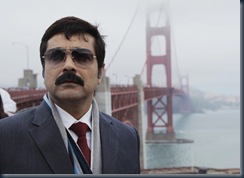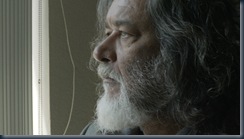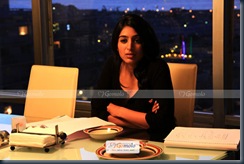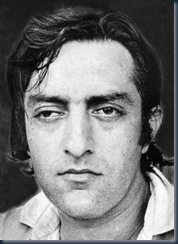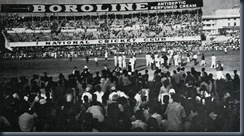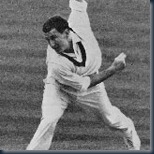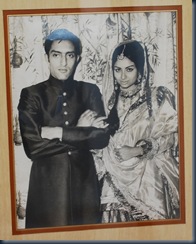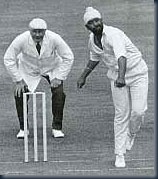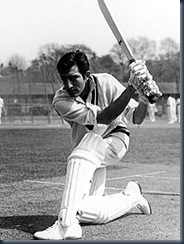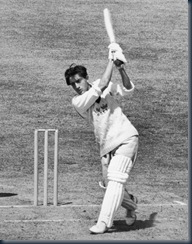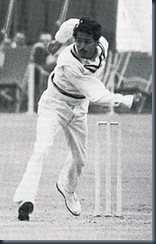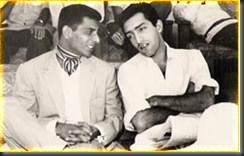Friday, January 26, 2018
Monday, October 19, 2015
Tuesday, June 5, 2012
Countering an image!!!
The Times of India newspaper carried a write up by a person who was a former IT secretary of the Government of Karnataka. Judging by the incredibly unscientific nature of his article—lies, hearsay, unsubstantiated statements, etc this article required a quiet delivery into the dustbin. Unfortunately, this was approved and thought fit for publication by a leading National daily. This was forwarded to me and I was forced to put it up in it’s entirety and then counter it.
Crass commercialisation and corruption are eroding the vitals of India's healthcare system
Doctors have demanded an apology from Aamir Khan, for having highlighted medical malpractices on a TV show. However, the fact of the matter is that while corruption in public sector and government has always been the focus of media, corruption in private clinics is seldom brought out. Catastrophic illness in the family is the number one reason for rural indebtedness. Healthcare expenses have become prohibitive even for upper-middle-class families. The most important reason for expensive and uncertain healthcare has been corrupt healthcare practices in India.
Consider a real case of a person who met with an accident near Electronics City, located on the outskirts of Bangalore. The patient was lying in a pool of blood and many IT professionals passed by. No one stopped to pick him up in a car, for fear of loss of time and later mindless police investigations and prolonged court procedures. A rickshaw driver picked up the patient. He could have taken the patient to Nara-yana Hrudayalaya which is just two km from the place of accident. The driver, however, decided to take him through the by-now infamous Bangalore traffic for over 25 km, to a hospital in the city centre. That hospital pays Rs 3,000 to a taxi driver for bringing a serious patient.
The misuse did not stop there. The hospital authorities called for the patient's wife. She rushed in the next half hour. The hospital charged Rs 3 lakh to her credit card as advance payment. A credit limit of Rs 3 lakh is rich by Indian standards. But she was not allowed to see her husband, and had to wait anxiously for over 45 minutes. She could not bear it anymore and barged into the hospital room. The technicians were repairing the ventilator. She immediately shifted her husband to another hospital. The doctors tried to revive the patient's brain for 15 days, but did not succeed.
The unethical practice of hospitals encouraging incentive payments to taxi drivers goes unabated. The result could be fatal for the patient. This can happen to any one of us in any city. What else do hospitals do?
They encourage doctors to prescribe too many tests, particularly the expensive ones. An MRI or a CT scan can cost Rs 10,000. The doctor gets one-third the amount as commission, for the prescription. The commission to the doctor is often paid by cash, but some pay by cheque too. Primarily it is not illegal if the doctor receives commission money in India. In the US, the Stark law prohibits such payments. The doctors who receive such payments could be debarred from practice for life. In India, the healthcare regulator, the Medical Council of India, has punished no one. Physicians have to declare any beneficial interest they may have with diagnostic clinics. Why can't India have similar regulation?
Consider kidney stones, most prevalent in India, due to our spicy diet. Many urologists prescribe surgeries for removal of kidney stones. The surgery is expensive and painful. Advanced lithotripsy uses laser beams to break the stones. Even technicians can be trained to use the lithotripsy machines. The machines work well for stones around 4 mm or less. But even if they are detected, doctors wait to prescribe surgeries that are invasive and expensive. No wonder, surgical procedures have gone up 20% over the last four years.
A leading orthopaedic surgeon in Bangalore often pres-cribes knee replacement. The surgery used to be undertaken for old people unable to walk. Smooth-talking doctors now convince even youngsters to go for it. The average age of patients in knee replacement has been going down. The hidden reason for such prescription is said to be prostheses suppliers who dole out Rs 25,000 per surgery. The same applies to cardiac operations supported by stent manufacturers.
Hospital-related infections are a major cause of deterioration or even death of patients. In the US, such deaths account for 20% of total mortality in hospitals. The figure in India is lower, but wrongly calcu-lated. Sometimes very serious patients are discharged with a recommendation to try another hospital, fully knowing the patient will die soon. The hospital's reported death rate comes down. The patient may die during tortuous travel in ambulance vans. Deaths in Indian hospitals are rarely investi-gated in detail. Senior doctors object to the review of their decisions by any committee. Most hospitals that depend on star doctors do not want to antagonise them. Patients pay with their lives and with their hard-earned savings for medical callousness.
Pharmaceutical companies pamper healthcare professionals with conferences in exotic vacation spots abroad. Hospitals sponsor physicians' airfare. The pharmacy companies buy tickets for wife and children. The net result of course is that patients end up buying expensive medicines.
While many are aware of these malpractices, they look the other way. How can one improve the system? First, the industry needs treatment protocols based on Indian conditions. Second, a systematic physician credentialing system should mandatorily track all the treatments, surgeries, outcomes, problems, deaths for each doctor and make this information public. Most important, a comprehensive regulation that brings more transparency in hospital operations and gives more rights to patients is long overdue.
The writer is the founder of Brickwork Group and a former IT secretary, government of Karnataka.
MY REPLY:-
This TOI article was forwarded to me. I am penning my reactions to such sensation mongering, factually incorrect and biased article .
1)The most important reason for expensive and uncertain healthcare has been corrupt healthcare practices in India.
From where has this supposedly erudite writer got this information? Or is he giving an armchair dialogue??This could have been ignored as an Amir Khan show littered with biased untruths---had it not been printed in the TOI which lately has been more interested in opinionated facts(?) rather than hard core news reporting together with hyperventilation and slanging verbal matches. The reason for increased costs lies in rising prices for drugs, equipments, salaries, fuel prices etc.etc.for which Doctors are in NO way responsible.
2) The technicians were repairing the ventilator…
Impossible to comment on an one sided description. What was the hospital’s explanation? It is difficult to believe that a Private Hospital willing to give Rs. 3000 to a Taxidriver for bringing in emergency cases—had only ONE ventilator available and that too not functioning properly!!!! The practice of taking advanced payment for critical cases stemmed from the fact that many such cases refused to pay the bill later. In fact, the biggest losses incurred by private hospitals are unpaid bills… It is unfortunate that the patient died—but probably the intensity of the trauma was also a factor.
3) The unethical practice of hospitals encouraging incentive payments to taxi drivers goes unabated….This is a shameful practice and should be stopped. In fact, in Kolkata the few clinics and hospitals who started this system—quickly opted out as they found it counter productive(demands became higher etc).
4) They encourage doctors to prescribe too many tests, particularly the expensive ones. An MRI or a CT scan can cost Rs 10,000. The doctor gets one-third the amount as commission, for the prescription. The commission to the doctor is often paid by cash, but some pay by cheque too.---Again not at all UNIVERSALLY applicable. There are thousands of doctors who do not take commissions. To say ALL CT and MRI’s are unnecessary and recommended for the sole purpose of making a quick buck is wrong, false and fabricated. Both of these are excellent investigating tools and the demand by patients are to get quick, reliable diagnosis and treatment . Our text books recommend these investigations in many cases.
5) . Primarily it is not illegal if the doctor receives commission money in India.
Even then a vast majority of doctors do not give or take commission.Are there any reliable statistics on these issues or are all this another example of creative research!!!!!
6) The machines work well for stones around 4 mm or less. But even if they are detected, doctors wait to prescribe surgeries that are invasive and expensive.
There are also many cases of failed lithotripsy which have to be operated, stones greater than 4-5 mm have to be operated, a small stone causing hydronephrosis has to be operated etc, etc. To know all about it—I recommend that this SPECIAL, all knowing IT specialist takes a MBBS course, specialise And then comment!!!!!… It is funny how IT specialists to rickshawallas and TOI editors know all about surgical indications---and we as specialists know so little. Is it time for us to comment on IT activities???? Number of surgeries have gone up because of better investigations, better equipments, more skilled surgeons and better ,properly equipped hospitals!!!! But then some persons live in a warped Time Zone and refuse to support Change, no matter how better are the results!!!
7) The average age of patients in knee replacement has been going down. The hidden reason for such prescription is said to be prostheses suppliers who dole out Rs 25,000 per surgery.
This is akin to droppings from a chaste animal!!!! What sort of a world does this person live in where the vision is jaundiced and and so bigoted!!! The reason the age group of Knee Replacements are going down is due to the presence of long lasting implants, and because there were no effective alternatives, in these patients whose best years of their lives were being tragically lost.
Rs.25000/ per implant? Only partially possible if the surgeon is the dealer himself.
8) Sometimes very serious patients are discharged with a recommendation to try another hospital, fully knowing the patient will die soon. The hospital's reported death rate comes down. The patient may die during tortuous travel in ambulance vans.
This is straight out of a film script!!!! How can such trash be accepted for publication? The clinical skills of doctors must have been phenomenal---that they can estimate the duration of Traffic jams, and the time of death so accurately that the patient can die EXACTLY in the ambulance !!!!
9) Pharmaceutical companies pamper healthcare professionals with conferences in exotic vacation spots abroad. Hospitals sponsor physicians' airfare. The pharmacy companies buy tickets for wife and children. The net result of course is that patients end up buying expensive medicines.
All these companies have their own ethical standards plus their industry directives. Plus governmental regulations. The prices of medicines are set by government—and health Care professionals have nothing to do with it!!!
The last para is the typical mumbo jumbo of a confused presentation. Of course we need industry standards and regulations. So when have Doctors wanted otherwise?
My plea is to everybody with no knowledge about the medical profession to stop these silly articles. But then , with these people like this writer and Amir Khan around you can be sure of the spread of stupidity…
Thursday, February 2, 2012
Pranabbabu for Prime Minister!!!
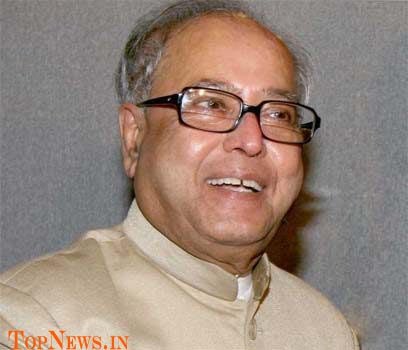
Years ago when Indira Gandhi was assassinated—Pranab Mukherjee made his first and possibly his last cardinal mistake. He did not express his wish NOT to be the Prime Minister. For that he was sidelined in his party and sent to Coventry. He was so disillusioned he broke from the Congress to create a new party Rashtriya Samajbadi Congress, was soundly thrashed in the elections and had to eat humble pie before he was reinducted to the party and duly became a MP from a safe Rajya Sabha seat with motley support. He swore privately to himself that he would never again give anybody an opportunity ever again to humiliate him like this.

Blessed with shrewd intelligence and an unique gift of foresight in recognising and sidetracking his opponents—present and future possible---he picked his way surely and steadily through the minefield of Congress Politics to positions of power and influence. Never for once did he deviate from the expressions of loyalty to the Gandhi Family either in private or in public. He positioned himself as universally approachable troubleshooter—acceptable to all parties—allies or enemies.

He became a mediator of crises for the Congress Party and he pulled off several coups—talking to Karunanidhi, and Jayalalitha, allying with Mamata when he estimated that the forces of Paribartan were too much for the ostrich-like Left Front who hid their heads , sight and hearing in the sand and could not estimate what had hit them. His mediation with the Opposition to get Parliament functional again, his efforts to get the Lokpal Bill stalled, his handling of the Left parties and subsequent signing of the India-US Civil Nuclear Agreement Bill and the signing of the pact with Nuclear Supplier’s Group without signing the Nuclear Proliferation Treaty were masterly examples of his intellect, powers of persuasion and knowledge.

He has held all the powerful positions in New Delhi---Deputy Director of the Planning Commision, Minister of External Affairs, Defence, Home and now Finance and Parliamentary Affairs even substituting for the Prime Minister Manmohan Singh when he had to undergo Cardiac surgery.

His assessment of Political parties are simple and direct. When asked who were the greater danger—BJP or the Left parties—he replied ”The BJP of course. In 40 years they have formed the Central government. The Communists have been on the scene for almost a century and they have only formed the Government in 3 states only. The BJP is clearly is the bigger enemy by far…”
Though he has been accused in favouring Reliance Company against Bombay Dyeing thereby decimating the latter, favouring Taslima Nasreen’s banishment and mollycoddling the Left---none of these have really slurred him.His wish to be the President was left unfulfilled and he finally got rid of the most troublesome post of the Congress Party—the Pradesh Congress Chief of West Bengal after 16 years.

With the Supreme Court Judgment on the 2G scam, and an Enquiry into Mr.Chidambaram’s involvement in it almost certain—and PM Manmohan Singh under great moral pressure—who can Sonia Gandhi and the Congress Party turn to? Pranabbabu—who else? In a brilliant move of leaking the Finance Ministry notes to Chidambaram public—Pranabbabu has created a situation where is only competitor has been knocked out and in which he has no need to demand Prime Ministership—he will be requested to be one.
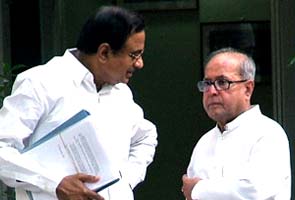

This fact is now being universally accepted. Note that the Chief Of Army General V.K.Singh has already met him.He is in close touch with Mamata Banerjee and Mulayam Singh Yadav. He is acceptable to Sharad Pawar and Jayalalitha.He has no impending scandals to be afraid off. He is acceptable to the Business Community.
Mamata was recently critical of the PM Manmohan Singh saying that he had never met her during her fast for he feared the CPM and neither had he sanctioned any funds for Bengal till now.The writing is on the wall. Manmohan Singh will probably become the President of India. And Pranabbabu the Prime Minister.

The parochialism in me wants the first Bengali Prime Minister. The Logical and rational part in me says that there cannot be a better Prime Minister. But the fear in me apprehends that he may merely be keeping the seat warm for Rahul Gandhi. But then no one reads and understands politics like Pranabbabu—the man who has always been a nominated parliamentarian till his win in Jangipur two years ago. He does not have a mass base. He cannot win an adverse seat like Mamata Banerjee BUT He remains the Great Survivor with the Prime Ministership as his aim…..
Is he hearing the clarion call now?
Saturday, January 21, 2012
Aparajita Tumi---A Momentous Letdown!!!
What makes a film watchable? Before we should talk about what makes a film successful we need to answer when a film becomes watchable. Imprisoned for two and a quarter hours at Nandan (there was no interval!!), hoping against hope that maybe the next few minutes would bring about something watchable—there was nothing left , when the closing credits rolled and the hall lights turned on—but to listen to a collective sigh of relief from the audience.
A film is watchable when there is something fresh and different in many of the different departments of the whole production. But the fundamental success depends on the Story, the script, the directorial concept and execution, the cinematography, the acting, the music, the editing and the production values. The only area of note in this film was in music.
<iframe width="560" height="315" src="http://www.youtube.com/embed/aerJCfbckGw" frameborder="0" allowfullscreen></iframe>
The story idea is trite and banal and gives a horribly wrong idea about the Indian diaspora—that their women just mope and have affairs to counter their boredom and disenchantment—and that their men do not really have to work and yet mint pots and pots of money !!!! There is no trace of the uncertainty of their jobs and lives, their constant striving to assimilate themselves in an alien society, their concerns about the development of their children and their attitudes, and their connections or disconnections with Indian culture and the relations and family left back home.The death of Kajaldi and her teashop in Kolkata is more contrived than real—a predictable ploy to show the expatriates sentimentality rather than reality—an unrealistic throwback to the drama of the 60-s rather than this 21st century. Why was Pradip (Prasenjit) disillusioned with the marriage? No proper background was established or created. The faux-pas created by Kuhu (Padmapriya) were the only evidence. In a marriage with young children, does one really break up and seek other pastures because of this only? Ask the NRI who is really more “familified “ than their home-bred counterparts? The character of Rathin (Kalyan Roy) was so pasted on that he appeared as a relief persona rather than an important part of the film. Tanusreeshankar telling her daughter Kuhu that she is her best friend, her talk with an errant son-in-law Pradip, in which Prasenjit addresses her as Mashima(!!!!) and her references to cooking his favourite dish for him even while her daughter’s marriage is breaking up( No rancour, no recriminations but a passive acceptance)—again is unbelievable and jarring. There were quite a few sniggers going around in the hall!!! The whole dialogues and script (Shyamal Sengupta) were full of these disconnects and contributed principally to the downfall of this film. How much can actors rectify by their skills?
<iframe width="560" height="315" src="http://www.youtube.com/embed/8WwxxmV7ulg" frameborder="0" allowfullscreen></iframe>
The acting was competent where Ronojoy (Chandan Roy Sanyal) walks off with all the honours. Tight, frank, and yet philosophical –Chandan was a saving grace in this film. Prasenjit has very little to do and gives up midway. Confined to a slow pace and long silences—he is never given the space and opportunity to display his skills. Again the script does not allow him to build up the relations with Ushashi (Komolini Mukherjee)—Ronojoy’s wife. Since they were friends for such a long time—what was the situation that they became lovers? Did Ushashi seduce him to pay back Kuhu? Is it a rebound phenomenon arising from the boredom of their marriages? Would not it been easier to find someone outside their immediate circle? Is Prasenjit a Dick only glancing sideways at girls everywhere? Is he so weak that he can be seduced by a couple of invitations? Is Ranojoy a part of it as he conveniently goes off to sleep?The predictable cliche of a convenient brain tumour(like a standard Bengali commercial venture) puts paid to any intelligent insight into the ultimate fate of this adulterous relationship. This is a film which Prasenjit would like to forget in a hurry.Perhaps in a “Rebound” phenomenon he quickly signed up for a Commercial venture!!!!
Komolini looked stunningly beautiful and conveyed the character of a woman with simple values who yearns to do justice to her artistic talents—but cannot due to the constraints of her marriage, Again the convenient childlessness in brought into play to add to her restlessness. Yousuf (Indraneil) is a short interesting character who could have been developed further. But Indraneil displays his abilities and makes it realistic in a short span. In fact the Indraneil—Komolini relationship and their one night stand was far more interesting than the rest of the film!!! Again sickeningly, it had to end with the boringly conventional (a La Sixties) gift of a Book of Bengali poems and a hand written note!!!!
The Cinematography by Ranjan Palit was pretentious. Soft focusses, colours restricted to yellow ,reds and browns dominate. Sometimes it becomes irritating as does the occasional skewed mid-shots. There are some stunningly beautiful frames—but somehow the impression created is not of a fluid cinema but a glorified PowerPoint presentation. Stringing together of some elegant shots is not enough. The camera has to depict the characters and the situation. There is too much stylisation making the cardinal mistake of relegating the STORY to the background,, The effects of the light play by the revolving light stands also seems too contrived. This bears no comparison to Avik Mukhopadyaya’s magnificent work in Antaheen.
Arghya Kamal Mitra as usual does a competent job. But one gets the impression that he very often threw up his hands at trying to make sense and pace out of the available shots. Again, this is a film which I am sure he will not place as his best work.There were a couple of uncharacteristic jarring cuts. Maybe they were due to the Nandan projection or simple unavailability of usable shots.
<iframe width="560" height="315" src="http://www.youtube.com/embed/cDmuVlF5YoE" frameborder="0" allowfullscreen></iframe>
The music is outstanding, specially when heard in the audio mode only. Santanu Moitra easily blends melody with genre-mixing in his own inimitable way. Chandril-Anindya’s lyrics as usual is thought provoking, unusually stimulating and clever which adds to the music. However this duo should be careful about being predictable and stereotyped. Outstanding singer selection is also commendable. Shreya is wonderful as ever—but Rupankar is fascinating. This brilliantly romantic singer deserves much, much more. Bonny Chakravarty, Suraj Jagan and Monali all perform well and the songs should be heard again and again. However the placing of these songs and the picturisation is found wanting. Listen to the songs on the IPod with headphones---deliciously memorable!!!!
<iframe width="560" height="315" src="http://www.youtube.com/embed/wRaQkwy1s6Y" frameborder="0" allowfullscreen></iframe>
Finally the Direction. Tony Roychoudhury has a strong visual sense. But that is not enough to make watchable cinema.This is his worst film. The story simply refuses to move!!! Why did he accept these trite dialogues—or were these words written on his insistence? Shyamal Sengupta is an experienced film personality. One of them should have seen the cliches—and acted appropriately. Tony Roychoudhury has not made the film for his audience. He has made it for himself and probably operating on a tight budget did not have opportunities for a reshoot. When a director forgets his audience, condemns them to a continuous two and a quarter hour viewing , with an irritatingly slow pace and little action—he is facing disaster. No matter how many publicity shows are done, no matter how many billboards are put up. no matter how many inserts are used in newspapers—this film falls flat on it’s face—stale beer impossible to digest and consequently thrown away.
Thankfully, the highest Ticket prices at Nandan was Rs 70. In some moments even that seemed expensive.
Saturday, December 17, 2011
Mission Impossible 4—The Ghost Protocol
MI4 has been solely made for you to see it---and not think about it. You simply do not have time to think.Amazing action schedules, bomb blasts (even of the Kremlin!!), car chases, personal chases, computer wizardry, natural disasters--all have been blended into a thrill-a millisecond smorgasbord.The motto was clear—leave the audience stupefied. The result is a film which you HAVE to see, but which you will forget in a week.

The storyline is simple. A rogue scientist is aiming to lay his hands on a nuclear code which will control Russian nuclear missiles in secret undersea locations and direct it towards U.S. cities in retaliation for an explosion which blows up the Kremlin. The secret group, IMF led by Ethan Hunt (Tom Cruise) must stop them. Framed by the scientist, the IMG is held responsible for the Kremlin blast and subjected to the Ghost Protocol whereby the Government discards the IMG and will not offer it it’s facilities.

The scenario starts off with a prison outbreak, and moves on to Prague, Moscow, Dubai,and then to Mumbai!!! The landmarks are well established and the breathtaking Spidermanish clinging on to the glass panes of the highest building in the world and then rockfacing it in a memorable sequence leave you gasping.

Emotions have very little place in these sort of films—but the mere exchange of looks by Ethan and his wife Mary leaves a lasting poignancy to the last scene.
The wisecracking, guntoting members are in the same style as before—but some of the breathless suspense filled moments are absent. It is more action than ever.Tom Cruise retains his athleticism but his looks are being affected by age. He looks old in this film and his stint as Ethan Hunt is nearing it’s end.
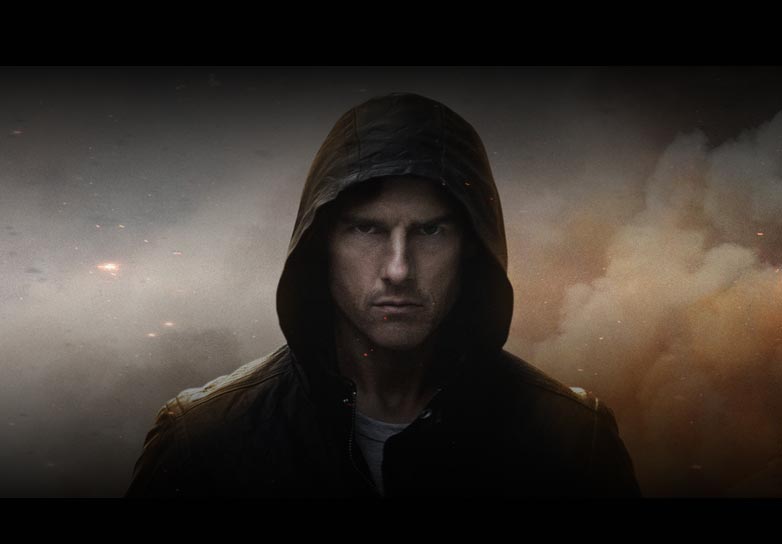
One of the key features is the use of the IMAX cameras which actually shows the glass warping under the pressure of Tom Cruise’s hands. The credits come in on an amazing sequence of a lighted strung out fuse-wire.The other high point is Tom Cruise’s incredible antics suspended on the walls of the Burj Khalifa—the highest building in the world without using a stunt double.

IMAX CAMERA
Anil Kapoor had a brief role of little consequence but was surprisingly presented as a Romeo with little character—the typical Hollywood tragic view of Indian superstars….
The popcorn was finished in minutes, so were the momos and French Fries.My usual practice of taking a snooze had to be abandoned as closing of eyelids could mean a missing of the action!!!

A film to see—and marvel at from a distance. Not one for emotional bonding or nearness….
Sunday, September 25, 2011
ROYAL MEJAJ
So much has been written about the Nawab of Pataudi after his death that it seemed pointless to write more about him. Yet, the few memories I have of him, most of them in my impressionable teenage years , kept resurfacing .The memories of a lithe fair(with a reddish glow) personality gliding in (not walking) to the crease, cap rakishly angled to one side, bat held casually as if it was an instrument of grace rather than force, were too compelling to keep it bottled up.
I have seen all my cricket matches only at the Eden Gardens in erstwhile Calcutta. Those days it was an open stadium with shamianas and tarpaulin strung above certain stands. The matches were played from one year to the next, starting on the 29th December and ending after the New Year, with a now extinct Rest day thrown in..In the morning, it was invariably misty, with many cricketers in their pullovers. There would be a breeze flowing in, from the High Court end from the river Hooghly which was just a stone’s throw away. The wooden stands would be a little wet from the morning dew and would creak every time you changed positions. Water was available from taps and the bottled mineral water bottles had not even been thought off. Ladies would actually knit during the day and the comments were piercing and entertaining.There was a distinctive smell in the ground found nowhere else in the world, of cigarette smoke and chanachur and Jhal-Muri and anticipation and excitement. Like many things of childhood, that smell has also disappeared. The incisive comments have been replaced by mobile phone conversations.
It was in this situation that I saw him first in 1969 in the match against Bill Lawry’s Australian side. Graham Mckenzie destroyed the Indian top order on a typical Eden morning swinging the outswinger late enough to touch the outside edge of the bat of the opening batsman Ashok Mankad. One drop Ajit Wadekar also snicked one to the Australian slip cordon. Gundappa Vishwanath endeared himself to the Calcutta crowd forever with two classical fleetfooted cover drives off Mckenzie. Then Farook Engineer nicked Mckenzie to the slips to leave India 22 for 3.There was a sudden hush in the crowd . The Nawab is coming—the whispers became stronger and sure enough came Tiger Pataudi.
The word “Mejaj” in Bengali has no equivalent in any language.Call it charisma , stature , presence but you will never convey the appearance of an Indian batsman who looked more English than the Englishmen, only infinitely more handsome, by any other word than the Royal Mejaj. There was an impatient tug at the pads, and then a stylish flick for a couple. Vishwanath and Pataudi added 42 for the 4th wicket before the gangling Ashley Mallett induced Pataudi to play for a turn that was not there and Ian Chappell clutched on to the catch. The Nawab departed to a collective sigh from the disapponted crowd, walking well before the umpire’s decision.”Should have stayed a little longer”, muttered my grizzled face neighbour.”He has to make it up next innings”. The Nawab walked off, head a little bowed, perhaps a little shy that he had failed before his in-laws(He had of course married Calcutta girl Sharmila Tagore).
When Australia came into bat, all eyes were on him as he led the Indian team on to the ground. He walked a few paces ahead of his men, and his directions were simple and authentic. The Indian opening attack consisted of Subroto Guha ,the Bengal swing bowler playing probably his second or third test, and the athletic but strictly medium paced left handed Eknath Solkar. Bill Lawry and Keith Stackpole were a cut above them , but we could never forget the magical bowling of Bishen Bedi as he looped, spun, outthought and outfoxed batsman after batsman to finish with 7/98. Throughout it all, Pataudi maintained close catching fielders in Solkar and Wadekar, never discouraging his bowlers to flight. And in the covers he prowled like a Tiger, swooping down on his prey (the cricket ball) with precision and surety. His returns were hard and thumping well into Engineer’s gloves and when he chased, he did it with style and elan.
Australia garnered a lead of 120-odd runs. The Indian reply was a disaster. The hero of the first innings, Vishwanath departed for 5, and when Pataudi joined Wadekar,the score was 90 for 4. Connolly and Freeman were swinging and cutting the ball prodigiously, so we waited with bated breaths for a Royal innings. Lawry brought on Ashley Mallett and with a sense of relief, the Nawab tried to sweep him but missed. He surveyed the field once again. Mallett tossed it up again on middle-leg and the Nawab in a classical English response(he after all had played most of his cricket there) swept him high and handsome straight to Alan Connolly at deep mid wicket. He had made 1 and India were half the side down staring at an innings defeat. There was a collective growl from the crowd. Irresponsible, foolish, casual were some of the nicer epithets showered on him. My grizzled neighbour just scratched his head ad said, “He backed himself to clear the field.That’s the way he has played all along—his way, his mejaji way”.
Perhaps he lived his life that way too—on his own terms, on his own thinking.
The second time when I saw him was in his twilight years. In 1974, Clive Lloyd led the West Indians to huge wins in the first two Tests of the 5 Test series in India. When they came to Calcutta, we had braced ourselves to another loss. India batted first and again were in trouble as the first three batsmen—Naik,Engineer and Parthasarathy Sharma departed early. Pataudi joined Vishwanath and we could see from the beginning that the pace trio of Roberts, Julien and Vanburn Holder was too much for him. They were keeping the ball just short of a length and bouncing the ball straight at the midriff. Pataudi was jumping out of the way. Sometimes with tremendous courage he got in line and fended awkwardly. You could see the frustration in his immobile face. His royal demeanour was crumbling. He must have been muttering to himself—“These guys are dominating ME!!” he went off for a walk to square leg after a vicious bouncer steepled up to his face. He swayed away in desperation. In those days there were no chest protectors,no helmets, no real finger protector gloves. When he took guard again, the watery sun came out of the overhead clouds and cast long shadows of the players over the emerald green grass. Vanburn Holder came lumbering in, pitched on off and middle and the ball rose straight at the Royal chest. We saw a movement to the leg side, then a flash of a cream bat as it swung down in a screaming cover drive that had the ball rocketing to the boundary. We clapped in amazement. The next one from Holder was similar but faster. Again there was the Nawabi sway to the legside. This time the shot was squarer, but with more velocity. The West Indian fielders grinned ruefully. Holder glared at him and then strode back to the top of his run up. He came in with a glint in his eye. This time , the ball reared up faster. Holder seeing Pataudi’s movement directed this on leg stump. Pataudi had read it well, had moved inwards and stroked the ball off the back foot to the long on boundary.The most glorious and difficult shot—a back foot on drive of an express bowler had been executed.That shot lives in my memory still, and whenever I am in a tight spot, I recollect the shot and the scene—a triumphant champion batsman putting his doubts aside and showing who was king—looking on with pride and satisfaction at a red cricket ball destined for the boundary ropes. Holder’s shoulder drooped. The next ball was of a fuller length and Pataudi drove through the covers with a grace which only he possessed.
“This couldn’t last—it just could not”, I muttered to myself. It did not. Soon after, Pataudi fell to the wily Andy Roberts who shattered his stumps. The Nawab walked off, his shoulders a little hunched, his India cap still tilted sideways as the crowd almost rose to their feet and started clapping him back. He had played an innings of Royal Mejaj.
In the first innings, Kanhai made 90 with his famous falling over sweep shot.West Indies amassed 390. India in their second innings , thanks to one of the greatest innings seen at Eden Gardens—Vishwanath’s glorious 139 got a lead of 309. West indies raced to 146/3 at the end of the fourth day with Lloyd and Kalicharan unbeaten. Chandrasekhar the mystery legspinner whose stock ball was the one coming into the batsman had been hammered severely by the West Indian batsmen. When on the 5th morning, the Nawab kept him on, there were rumblings from the crowd. After a couple of boundaries , the comments started flowing. True to his character, the Nawab kept on with him. In the next few minutes, Chandra had clean bowled Lloyd, had Kalicharan caught at slip and Bernard Julien lbw. Bedi was brought back on and the tail cleaned up. India had won a memorable Test match, unexpectedly and from behind. The Nawab had a rare smile on his face. He had been vindicated in front of his in-laws !!! Did this really affect him?? I think not, for he never believed in all this business of proving himself to others.
I never saw him on a cricket field again as a player.In all his subsequent roles—he appeared as if those were mantles on him to be discarded after some time.His real self was known to him and his family. I like to think that as rabid cricket spectators we saw him in flashes—a trifle detached, but keenly observant,a batsman of rare talent and a Captain supremo, who played his cricket in the only way he wanted to—with Mejaj.
Even now, we will raise a silent toast whenever and wherever we meet for a cricket talk, to the Royal Mejaj of a departed Captain who gave us as so often cricket does, important messages on how to live our lives the way we want to.


